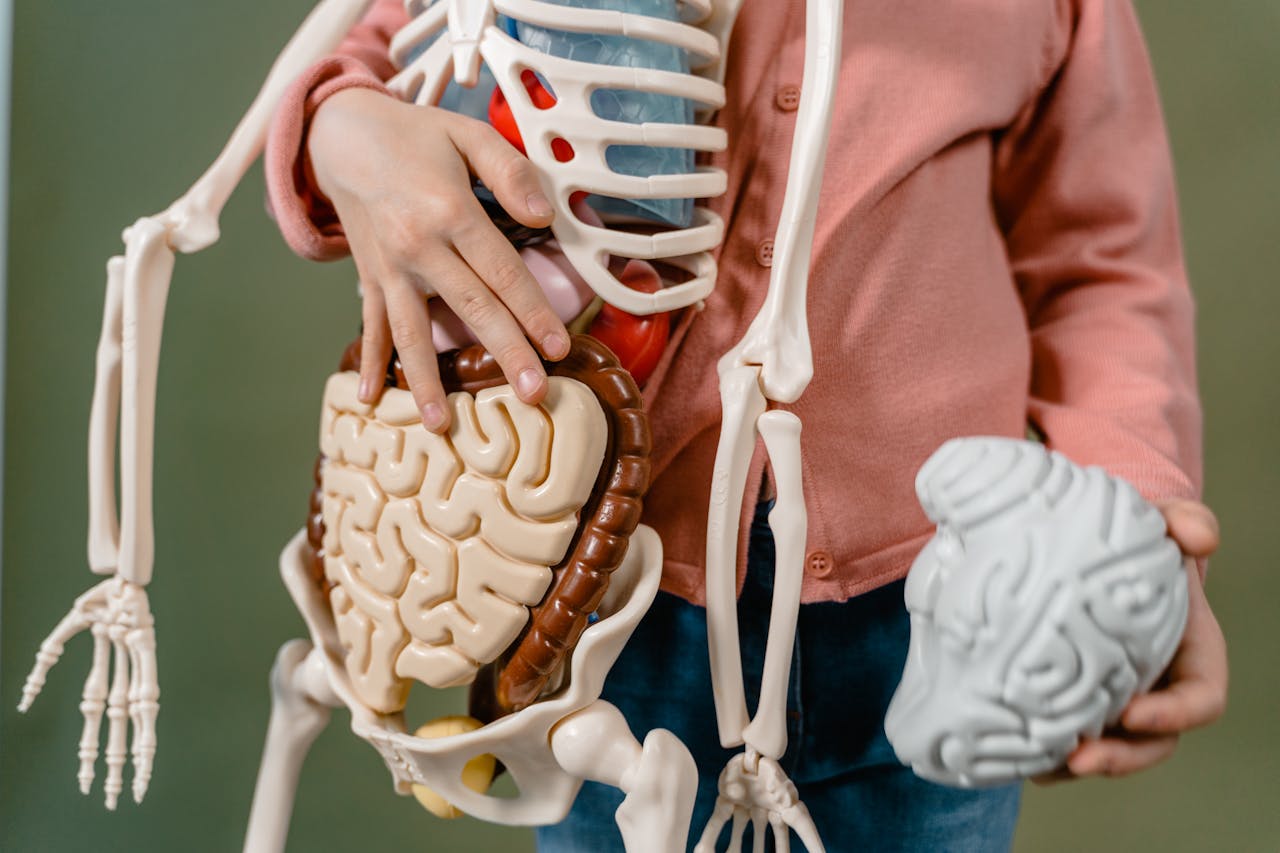
Table of Contents
The vagus nerve is also known as the vagal nerve and cranial nerve X. It has many vital functions and is essential in keeping the body healthy. It is the main nerve of the parasympathetic nervous system – the “rest-and-digest” system.
Key Takeaways
- Definition: The vagus nerves are the main nerves of the parasympathetic nervous system, originating from the medulla oblongata and responsible for the "rest-and-digest" response.
- Location: The right vagus nerve and its branch extend through the neck, chest, and abdomen, connecting to various organs, including the digestive system.
- Functions: Controls heart rate, digestion, immune response, and inflammation, helping maintain balance in the body's systems.
- Disorders: Dysfunction can lead to issues like poor gut health, high blood pressure, and mood disorders.
- Stimulation: Methods like massage, deep breathing, and yoga can improve vagal tone and overall health.
What Is The Vagus Nerve?
The vagus nerve is responsible for communication between the gastrointestinal tract, heart, and other organs. It regulates digestion, the immune system and inflammation, and even mood. All these actions are involuntary, meaning that your body does what it needs to do without you having to think about it.
The vagus nerve starts in the brain stem and extends down the neck into the chest and abdomen. It is a long, thin nerve that branches into different body parts. The vagus nerve is vital for many functions, including:
- Sending signals between the brain and the gut
- Aiding in digestion and satiety
- Regulating the immune system and reducing inflammation
- Controlling the heart rate and blood pressure
- Helping to modulate sleep and wakefulness
- Assisting with speech and swallowing
As you can see, the vagus nerve is responsible for a lot!
Yoga, stretching, and meditation are all excellent ways to stimulate your vagus nerve. Vagus nerve stimulation has many benefits, such as reducing inflammation, promoting relaxation, and improving mood.
Where is Vagus Nerve?
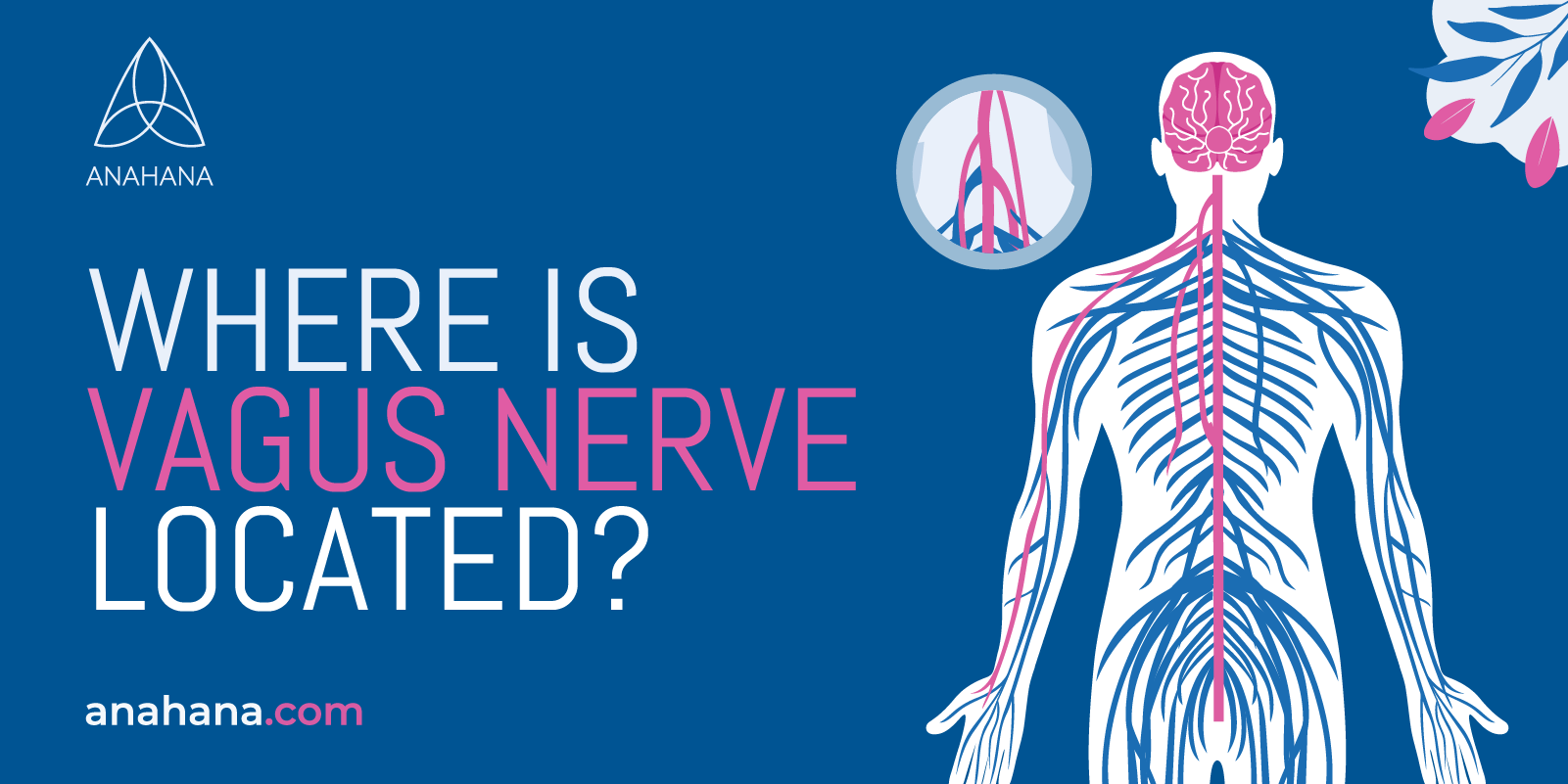 The vagus nerve is the longest nerve in the human body. It starts in the brain stem and ends partway through the colon. The brain stem connects the bottom of the brain with the spinal cord. Nerves that extend directly from the brain are called cranial nerves. There are 12 cranial nerve pairs, and the right and left vagus nerve pair is the tenth cranial nerve.
The vagus nerve is the longest nerve in the human body. It starts in the brain stem and ends partway through the colon. The brain stem connects the bottom of the brain with the spinal cord. Nerves that extend directly from the brain are called cranial nerves. There are 12 cranial nerve pairs, and the right and left vagus nerve pair is the tenth cranial nerve.
The vagus nerve runs down the neck into the chest and abdomen. Its nickname is the “wanderer nerve” because it has many branches that innervate different organs in the body. Examples include:
- The throat
- The heart
- The lungs
- The liver
- The pancreas
- The spleen
- The digestive tract
The vagus nerve has both sensory and motor nerve cells, or fibers. Sensory, or afferent, nerve fibers carry information towards the brain from the body. Motor, or efferent, fibers carry signals away from the brain to the rest of the body.
How Vagus Nerve Works in the Autonomic Nervous System
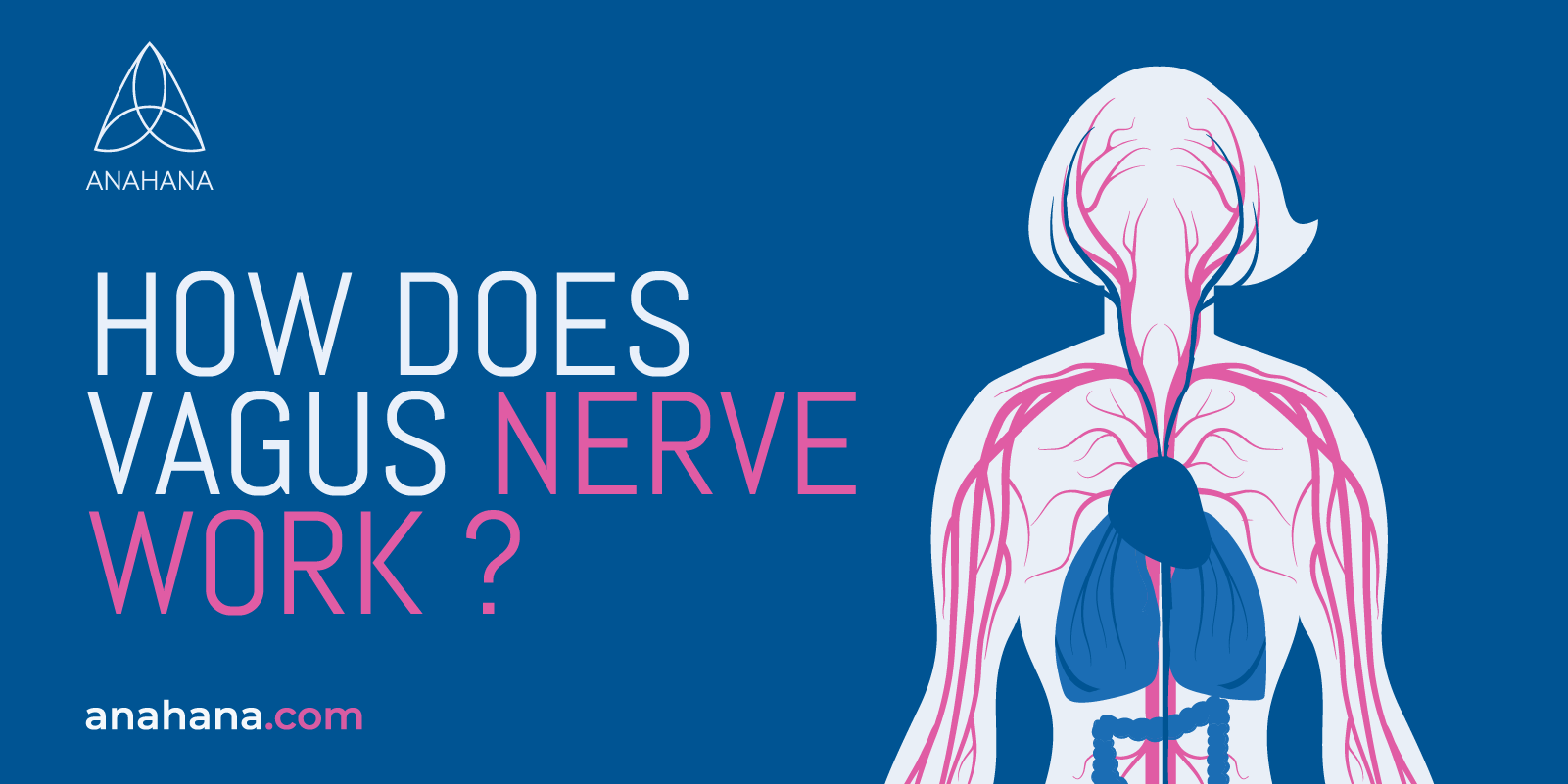 The orientation of the vagus nerve within the nervous system helps explain its role. The vagus nerve is the main nerve of the parasympathetic nervous system, which is part of the autonomic nervous system (ANS).
The orientation of the vagus nerve within the nervous system helps explain its role. The vagus nerve is the main nerve of the parasympathetic nervous system, which is part of the autonomic nervous system (ANS).
The ANS controls the body's involuntary functions, including heart rate, blood pressure, respiration, and digestion. The ANS comprises the sympathetic, parasympathetic, and enteric systems.
The parasympathetic nervous system is responsible for the body's rest and digestion response. This system helps to promote relaxation and calmness. The vagus nerve represents about 75% of parasympathetic innervation.
The sympathetic nervous system is the fight-or-flight system. It is responsible for the body's natural response to stress, preparing it for action by increasing heart rate, blood pressure, and respiration.
Under normal conditions, the sympathetic and parasympathetic nervous systems balance each other out. So activation of the sympathetic nervous system can cause compensatory stimulation of the vagus nerve.
The enteric nervous system (ENS) is a network of nerves in the digestive tract. It can act independently of the rest of the nervous system to control digestion. The link between the ENS and the brain is called the “brain-gut axis.” The vagus nerve interacts with the ENS to provide some of this communication.
Vagus Nerve Functions
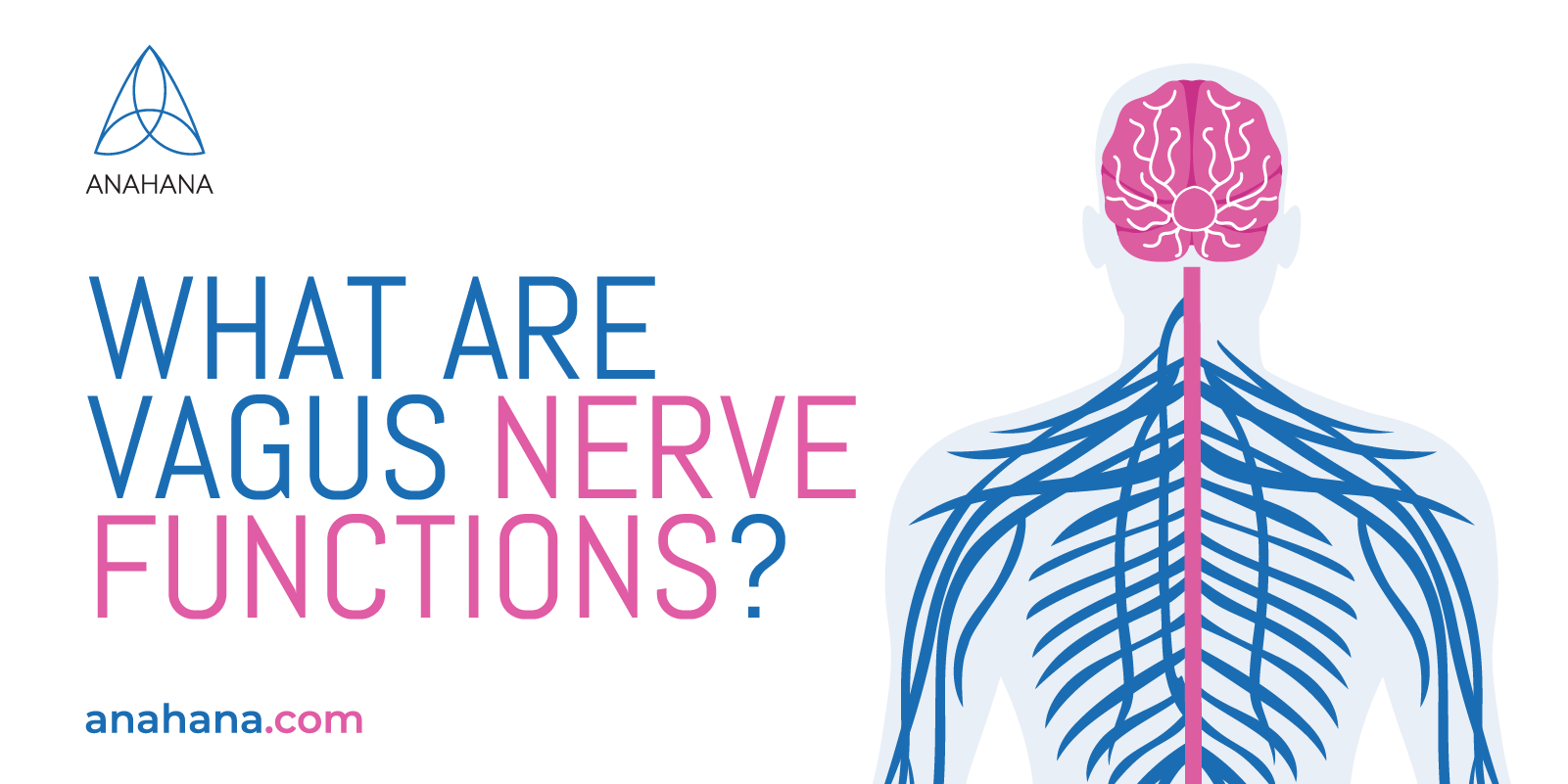 The vagus nerve is a cranial nerve that is vital to many bodily functions. It sends signals between the brain, gastrointestinal tract, heart, and other organs. The vagus nerve plays an essential role in the brain-gut axis. This is the communication pathway between the brain and the gut.
The vagus nerve is a cranial nerve that is vital to many bodily functions. It sends signals between the brain, gastrointestinal tract, heart, and other organs. The vagus nerve plays an essential role in the brain-gut axis. This is the communication pathway between the brain and the gut.
Digestion
90% of the vagus nerve fibers in the gut are afferent (sensory). When you eat, stretch, and chemical receptors in the stomach sense the amount and composition of the food. Gastrointestinal vagal afferent neurons send this information from the digestive tract to the brain.
Then, the brain processes this information and uses the vagal efferent (motor) fibers to tell the gut to start digestion. It also signals fullness when you have eaten enough. The vagus nerve regulates glucose production and storage and insulin secretion to manage blood sugar levels.
Inflammation
The acute inflammatory response is essential to immune function, but excessive or chronic inflammation can cause many medical problems. One of the critical roles of the vagus nerve is to regulate inflammation during the immune response.
The immune system releases pro-inflammatory particles called cytokines when the body is infected or injured. Receptors sense elevated systemic proinflammatory cytokines, and vagal afferent fibers tell the brain. Then, signaling down the efferent vagus nerve inhibits additional cytokine production to reduce inflammation. Vagal inhibition of inflammation is a major aspect of the brain-gut axis, so disturbances of the vagus nerve affect the brain-gut axis too.
Other Functions
The vagus nerve has sensory and motor fibers in the mouth and throat involved in taste, smell, salivation, swallowing, and speech. Vagal afferent fibers transmit temperature, pain, and touch information around the outer ear.
Vagal signaling lowers heart rate and blood pressure, constricts and stiffens the airway during expiration, regulates sleep, and causes nausea and vomiting. It is also involved in the mood by affecting the metabolism and signaling of serotonin, dopamine, and norepinephrine.
Vasovagal Response
A sudden spike in vagal activity can cause fainting. This is the most common type of fainting, called the vasovagal response or vasovagal syncope. Sudden and extreme emotional stress, fear, and pain can activate vasovagal syncope. It is why some people faint at the sight of blood.
The proposed mechanism is that these situations trigger the sympathetic (fight-or-flight) response, and the parasympathetic nervous system tries to compensate. If this compensation is too extreme, the vagus nerve stimulates a rapid heart rate and blood pressure drop. Not enough blood gets to the brain, and you lose consciousness. Usually, the body corrects this quickly, and there is no lasting harm.
Vagus Nerve Disorders
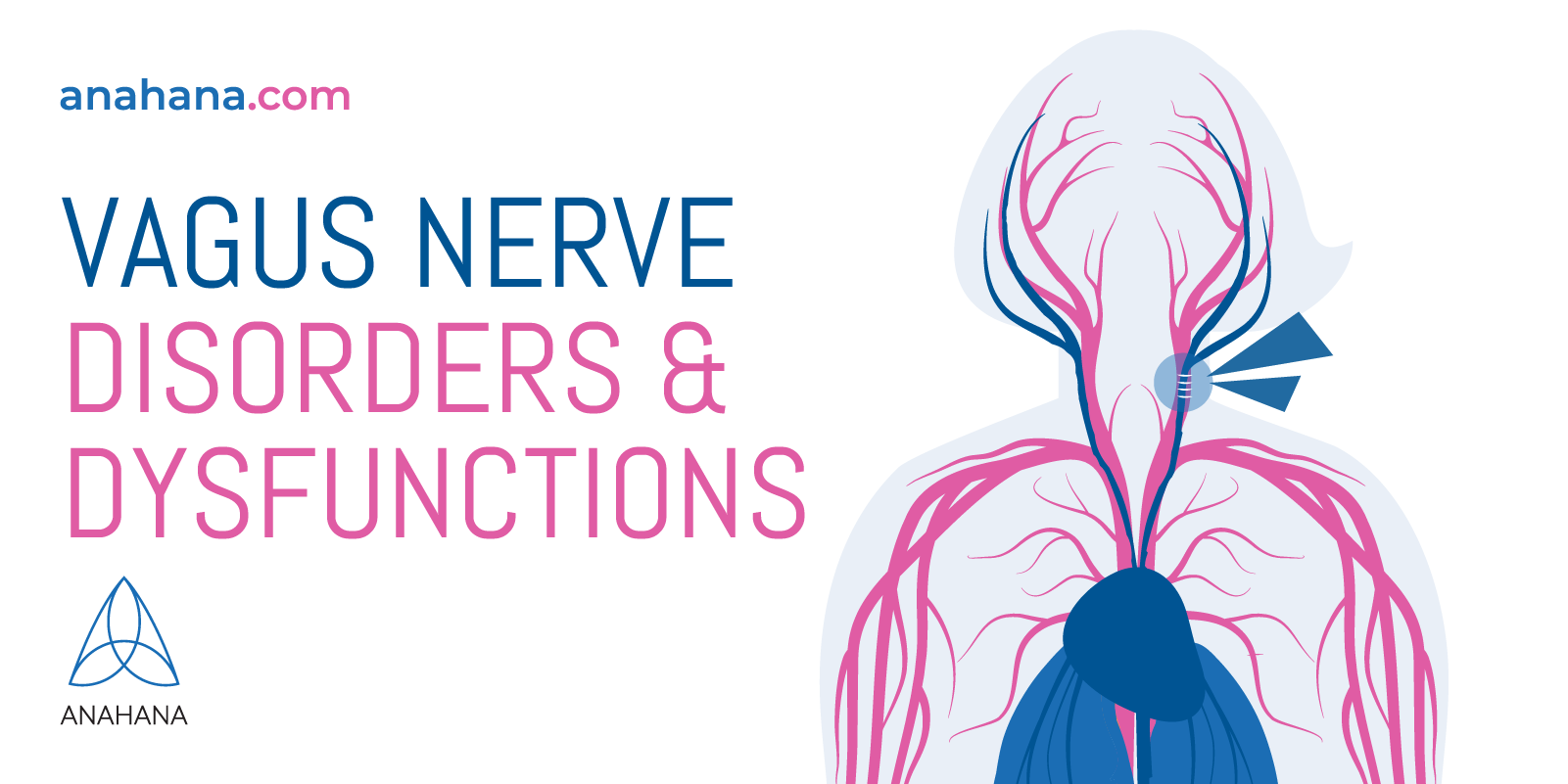 Different conditions can affect the vagus nerve. These include psychiatric and inflammatory disorders, infections, and autoimmune disorders. Chronic inflammation due to vagal dysfunction can cause additional problems.
Different conditions can affect the vagus nerve. These include psychiatric and inflammatory disorders, infections, and autoimmune disorders. Chronic inflammation due to vagal dysfunction can cause additional problems.
There is often a “chicken and egg” relationship between vagus nerve dysfunction and medical disorders. Vagus nerve dysfunction can cause inflammation and other issues leading to illnesses, but many of these can also disrupt the vagus nerve.
Disorders associated with vagus nerve dysfunction include:
- Poor gut health and digestive issues
- Irritable bowel syndrome
- Inflammatory bowel disease
- Obesity
- Type two diabetes
- Rheumatoid arthritis
- Other autoimmune disorders
- Chronic inflammation
- High blood pressure
- Heart arrhythmias
- Sleep disorders
- Mood and anxiety symptoms
- PTSD
- Speech and swallowing problems
Treatment for these conditions will vary depending on the cause. However, some general therapies can help to improve symptoms. These include lifestyle changes, diet changes, and supplements. Doctors can treat some conditions using a device that sends tiny electrical impulses to the vagus nerve.
Unhealthy lifestyle factors can also lead to vagus nerve dysfunction. These include:
- Chronic stress
- Poor diet
- Lack of exercise
- Alcohol abuse
- Smoking
If you think you may have a problem with your vagus nerve, it is crucial to see a doctor. They can diagnose the cause and recommend the best course of treatment.
Vagal Tone
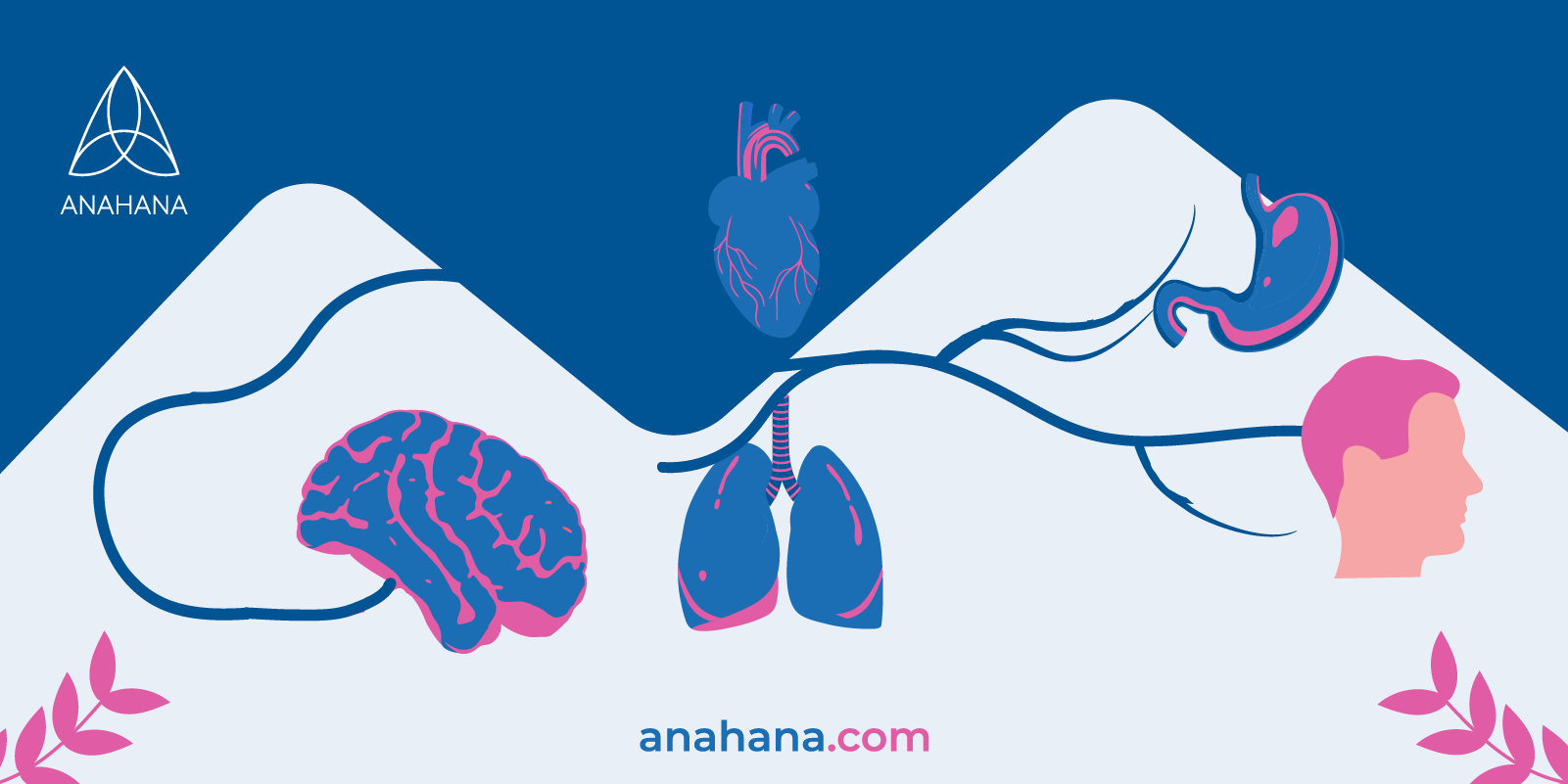 Vagal tone is a measure of the vagus nerve's activity to assess the health of the autonomic nervous system. A healthy autonomic nervous system should have a high vagal tone. This means the vagus nerve is highly active and communicates with the body's organs.
Vagal tone is a measure of the vagus nerve's activity to assess the health of the autonomic nervous system. A healthy autonomic nervous system should have a high vagal tone. This means the vagus nerve is highly active and communicates with the body's organs.
Medical conditions and lifestyle factors that affect the vagus nerve tend to decrease vagal tone. Methods to stimulate the vagus nerve increase vagal tone and protect against some psychiatric and inflammatory disorders.
The vagus nerve is an integral part of the parasympathetic nervous system. Parasympathetic innervation helps to regulate the body's rest-and-digest response. Vagus nerve stimulation can increase parasympathetic activity, and parasympathetic stimulation can increase vagus nerve activity.
You can achieve parasympathetic and vagus nerve stimulation by practicing yoga, stretching, and meditation. Vagus nerve massage may also help.
What Methods Are There For Vagus Nerve Stimulation?
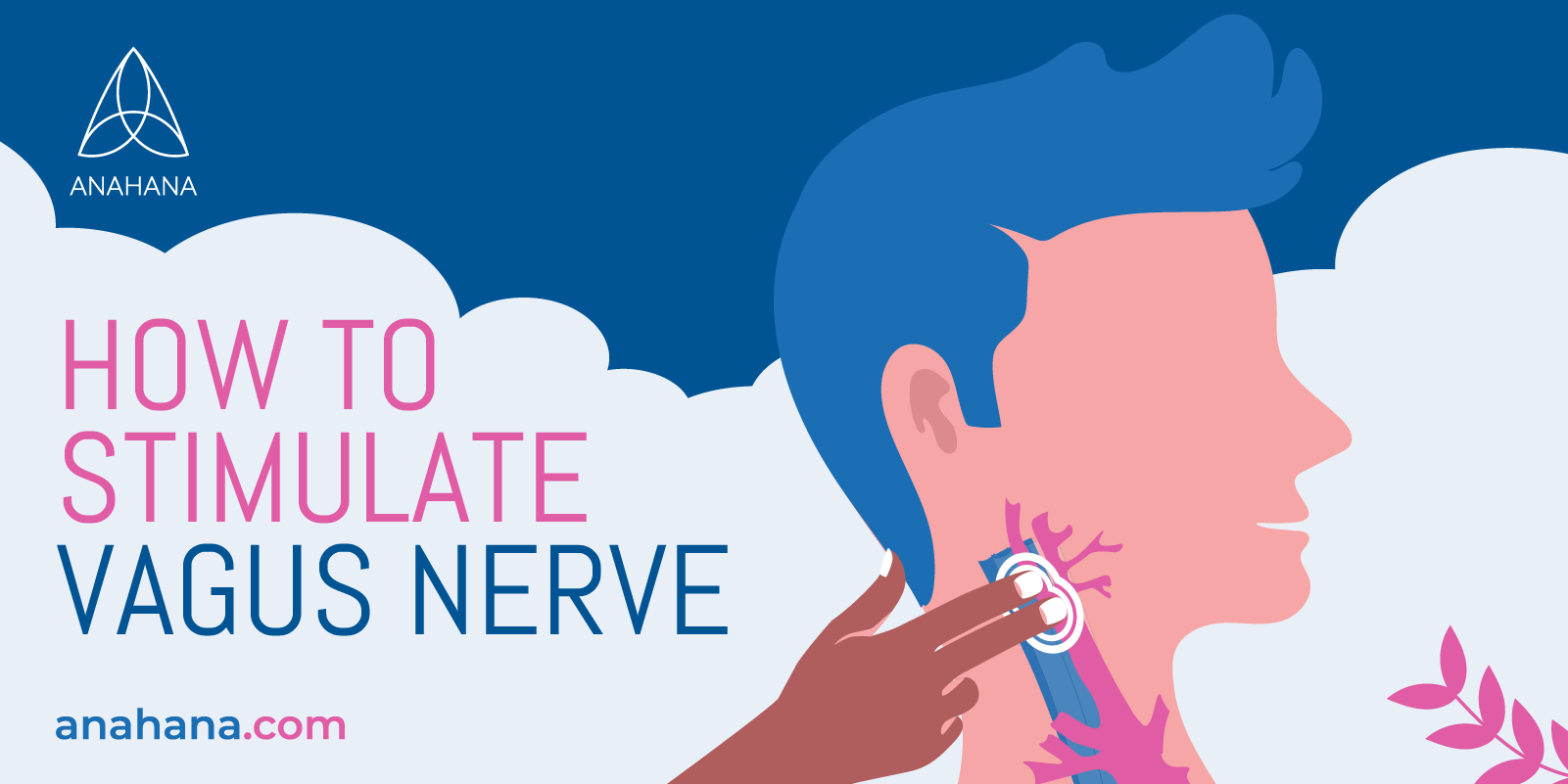 Vagus Nerve Massage & Massage Therapy
Vagus Nerve Massage & Massage Therapy
Vagus nerve massage is a therapy that uses moderate pressure and vibration around the neck to stimulate the vagus nerve and promote parasympathetic activity. Massaging the trapezius and sternocleidomastoid muscles along the side and back of the neck targets the vagus nerve, which runs below them.
A recent study found that 10 minutes of vagus nerve massage significantly increased vagal activity and promoted relaxation. Light-pressure shoulder massage similarly improved vagal activity and relaxation, possibly by stimulating the parasympathetic nervous system as a whole.
General massage therapy is an excellent way to increase vagal tone. It can broadly activate the parasympathetic nervous system and may inadvertently cause vagal massage. The vagally-mediated benefits of massage therapy include increased serotonin and dopamine, improved depressive and anxiety symptoms, enhanced attentiveness, reduced chronic pain, and lower cortisol levels.
Deep & Slow Breathing
Breathing at a slow rate called resonance frequency can balance the autonomic nervous system and improve the ability to handle stress. This occurs by increasing parasympathetic activity (rest-and-digest) and decreasing sympathetic activity (fight-or-flight). Resonance frequency ranges between four-and-a-half and seven breaths per minute, depending on the person.
A study in 2017 had participants complete 15 minutes of resonance frequency breathing and then undergo a stressor test. They found that resonance frequency breathing improved mood, increased vagal activity, lowered blood pressure, and buffered the stress response.
Meditation & Yoga
Meditation, stretching, and yoga are also effective strategies to regulate stress responses by stimulating the vagus nerve.
A study had participants complete four hours of guided meditation sessions weekly for four weeks. Each season was two hours long and included stretching, breathing exercises, awareness of sensations and feelings, and gratitude practice. The sessions resulted in significantly higher vagal tone and lower anxiety levels compared to the control group.
A meta-analysis evaluated data from 17 randomly controlled trials testing the effects of yoga on the autonomic nervous system. Practicing 60 to 90 minutes of yoga per week effectively lowered perceived stress and caused a shift to parasympathetic dominance. This means the parasympathetic response becomes more robust than the sympathetic response, so the autonomic nervous system remains calmer.
Conclusion
The vagus nerve, or vagal nerve, is a cranial nerve that is vital to the body. It helps regulate many of the body's involuntary functions by sending signals between the brain and the digestive tract, heart, and other organs. It is also a major player in the brain-gut axis. Vagus nerve dysfunction is linked to many psychiatric and inflammatory disorders. Stimulating the vagus nerve has many benefits, such as reducing inflammation, promoting relaxation, and improving mood. Methods of vagus nerve stimulation include vagus nerve massage, breathing exercises, meditation, and yoga.
What is the Vagus Nerve - FAQS
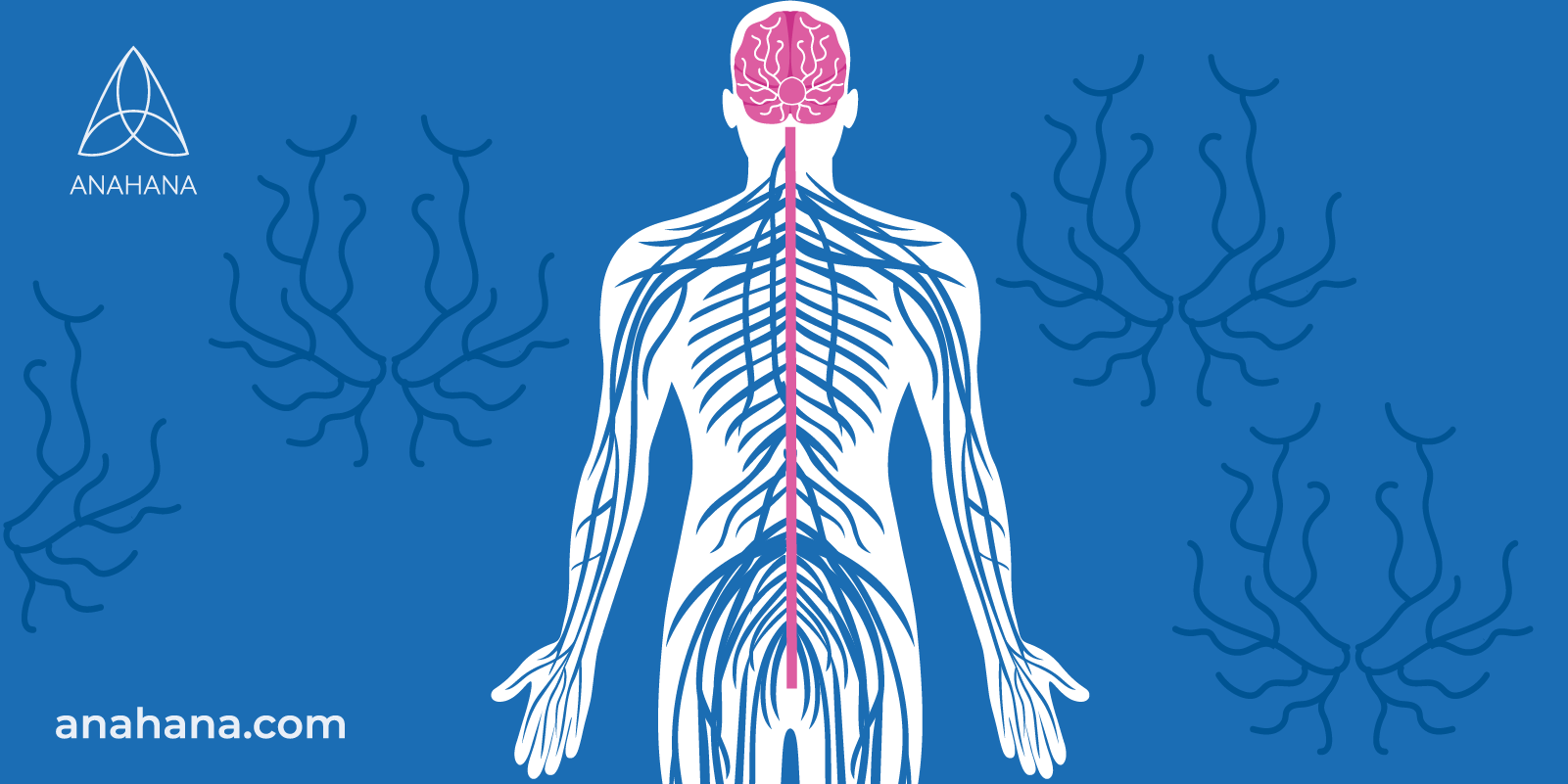 What is the primary function of the vagus nerve?
What is the primary function of the vagus nerve?
The primary role of the vagus nerve is to send signals between the brain and the gastrointestinal tract, heart, and many other organs. It helps control functions of the parasympathetic nervous system, including digestion and sleep. The vagus nerve is vital in preventing chronic inflammation, which can cause many medical issues. It is also part of the brain-gut axis.
What can cause vagus nerve problems?
Unhealthy lifestyle factors such as high-fat and high-sugar diets, smoking, alcohol abuse, and lack of exercise can all damage the vagus nerve. The vagus nerve fights excess inflammation and cortisol, but too much of these can be overwhelming and impact its function.
What happens if the vagus nerve is damaged?
Vagus nerve damage can cause a wide range of psychiatric and inflammatory disorders. Some occur in the gastrointestinal tract, such as inflammatory bowel disease and irritable bowel syndrome. Vagal dysfunction in the brain can worsen anxiety, depression, and posttraumatic stress disorder symptoms.
How do you massage the vagus nerve?
You will need to use pressure and vibration to massage the vagus nerve. Using your fingers or a massager, apply moderate pressure and vibration to the area around the vagus nerve in the neck for several minutes. This will help to stimulate the nerve and improve symptoms.
How can I improve my vagal tone?
You can improve your vagal tone by doing things that stimulate the vagus nerve. Examples include deep breathing, meditation, yoga, and acupuncture. Improving your gut health with supplements like omega-three fatty acids and probiotics can also help vagal tone and benefit the brain-gut axis.
References
https://www.ncbi.nlm.nih.gov/pmc/articles/PMC5859128/
https://www.ncbi.nlm.nih.gov/books/NBK539845/
https://www.ncbi.nlm.nih.gov/pmc/articles/PMC4082307/
https://www.ncbi.nlm.nih.gov/books/NBK470277/
https://www.ncbi.nlm.nih.gov/pmc/articles/PMC5961632/
https://www.ncbi.nlm.nih.gov/pmc/articles/PMC5467308/
https://www.ncbi.nlm.nih.gov/pmc/articles/PMC5575449/
https://www.ncbi.nlm.nih.gov/pmc/articles/PMC7828286/
https://www.ncbi.nlm.nih.gov/pmc/articles/PMC6262541/
https://www.ncbi.nlm.nih.gov/pmc/articles/PMC7479151/
Disclaimer
The contents of this article are provided for informational purposes only and are not intended to substitute for professional medical advice, diagnosis, or treatment. It is always recommended to consult with a qualified healthcare provider before making any health-related changes or if you have any questions or concerns about your health. Anahana is not liable for any errors, omissions, or consequences that may occur from using the information provided.

By: Anahana
The Anahana team of researchers, writers, topic experts, and computer scientists come together worldwide to create educational and practical wellbeing articles, courses, and technology. Experienced professionals in mental and physical health, meditation, yoga, pilates, and many other fields collaborate to make complex topics easy to understand.
